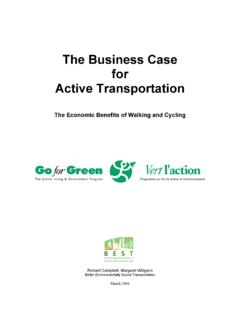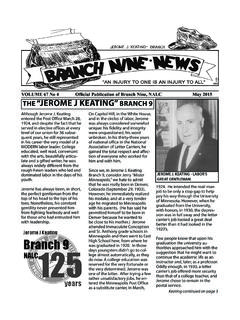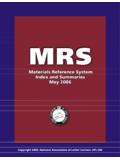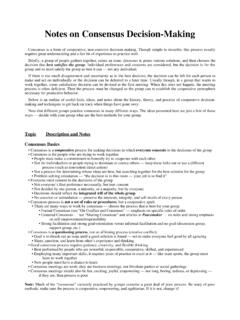Transcription of Towards Lifetime Neighbourhoods: Designing …
1 Towards Lifetime Neighbourhoods: Designing sustainable communities for allA discussion , opportunity, prosperity Towards Lifetime Neighbourhoods: Designing sustainable communities for allA discussion paperEd HardingInternational Longevity Centre UKNovember 2007 Department for Communities and Local Government Communities and Local GovernmentEland HouseBressenden PlaceLondon SW1E 5 DUTelephone: 020 7944 4400 Website: Queen s Printer and Controller of Her Majesty s Stationery Office, 2007 Copyright in the typographical arrangement rests with the publication, excluding logos, may be reproduced free of charge in any format or medium for research, private study or for internal circulation within an organisation.
2 This is subject to it being reproduced accurately and not used in a misleading context. The material must be acknowledged as Crown copyright and the title of the publication other use of the contents of this publication would require a copyright licence. Please apply for a Click-Use Licence for core material at , or by writing to the Office of Public Sector Information, Information Policy Team, St Clements House, 2-16 Colegate, Norwich, NR3 1BQ. Fax: 01603 723000 or email: you require this publication in an alternative format please email and Local Government PublicationsPO Box 236 WetherbyWest YorkshireLS23 7 NBTel: 08701 226 236 Fax: 08701 226 237 Textphone: 08701 207 405 Email: online via the Communities and Local Government website: 2007 Product Code: 07 HHS 04920 Contents 3 ContentsSection 1 Foreword by Baroness Andrews and Baroness Greengross 5 Section 2 Executive Summary 6 Section 3 What are Lifetime neighbourhoods?
3 8 Section 4 How would Lifetime neighbourhoods contribute to a sustainable future? 10 Section 5 How can we plan for Lifetime neighbourhoods? 15 Section 6 What does this mean for the planning process? 26 Section 7 Conclusions 30 Section 8 Further reading 31 References 324 Towards Lifetime Neighbourhoods: Designing sustainable communities for allNote to readers ILC-UK and Communities and Local Government Roundtable discussion, paper is informed by a joint ILC-UK and Communities and Local Government-hosted roundtable discussion in London in June 2007. The event was co-chaired by Baroness Greengross, Chief Executive, ILC-UK and Baroness Andrews, Parliamentary Under Secretary of State, Communities and Local Government and was attended by representatives from health, social care, planning, government and the private sector.
4 The author would like to offer his considerable thanks and acknowledgements to all those who took part or who have worked to promote the concept of Lifetime neighbourhoods. Contact:Ed Harding Senior ResearcherInternational Longevity Centre UK 22-26 Albert Embankment LONDON SE1 1: Foreword 5 Section 1: Foreword Baroness Andrews OBE Baroness Greengross OBEMany of us are aware that we live in an ageing society. But, as commentators have observed, the impact of these changes is often narrowly framed within a specialist, welfare, health or social care-based perspective. It is unusual for us to consider how neighbourhoods should respond to older people s experiences in the wider, day-to-day built environment, for example, the use of public transport, access to shops, amenities and leisure space, their perception of security, neighbourhood and place, and the desire to congregate, socialize and participate.
5 The Joseph Rowntree Foundation and Habinteg Housing Association have done much in the last 15 years to further our awareness of the issue of Lifetime Homes. These are normal , mainstream houses that meet several key criteria on design, providing us with an easily-adaptable, accessible home environment in which we have a good chance of managing the onset of disability and continuing with our lives. This has led many commentators to suggest that if we can build Lifetime Homes, surely we can also build Lifetime neighbourhoods ? Just as Lifetime Homes provide a high standard of mainstream housing suitable for all, could not better planned Lifetime neighbourhoods benefit all generations, even if most of us only notice our need for accessible, inclusive design later in life?
6 This paper was produced as part of the development work behind the forthcoming National Strategy for Housing in an Ageing Society. We would like to thank all those who took part in the roundtable discussion for their enthusiasm and Andrews OBE, Baroness Greengross OBE, Communities and Local Government Chief Executive, ILC-UK6 Towards Lifetime Neighbourhoods: Designing sustainable communities for allSection 2: Executive summary Lifetime neighbourhoods are those which offer everyone the best possible chance of health, wellbeing, and social, economic and civic engagement regardless of age. They provide the built environment, infrastructure, housing, services and shared social space that allow us to pursue our own ambitions for a high quality of life.
7 They do not exclude us as we age, nor as we become frail or disabled. The concept of Lifetime Neighbourhoods is not a new one, but has yet to make a significant impact on planning and neighbourhood design. The concept has originated over the last decade through work by the Joseph Rowntree Foundation, Habinteg Housing Association and other commentators. Yet all too often important opportunities for development and regeneration go ahead with little consideration of age in their planning, creating neighbourhoods that will fail many residents in future. Most features of Lifetime neighbourhoods will benefit all generations. For example, limited public transport will impede access to amenities at all ages.
8 However it may be particularly damaging to older people who are most reliant on it. Older people play a major social, economic and civic role alongside other generations. Lifetime neighbourhoods will reap an age dividend of improved health, inclusion and participation. Those that do not risk a downward spiral of ill health, disability and dependency in older populations. Given that we now have more people aged 65+ than we do aged 0-16, planning for Lifetime neighbourhoods will help us work Towards truly sustainable communities. Older people are not just beneficiaries of Lifetime Neighbourhoods, they also have a key role to play in their creation. Our desire to participate does not decrease with age.
9 Consultation is essential in identifying best practice and challenging negative design. In addition, the act of consultation and engagement itself will confer greater self-esteem, satisfaction and wellbeing. Sustainable planning of the human environment is interdependent with the development of healthier and wealthier communities. The World Health Organisation assertion that health equals wealth is widely recognised across different sectors, yet is still to make significant inroads into the realities of day-to-day 2: Executive summary 7 Cross-sectoral engagement in planning is essential for Lifetime neighbourhoods. Planners must engage with service providers to ensure the built environment offers age-proofed communities.
10 For example, by including provision for accessible local amenities such as civic and community centres, shops, and the transport, street environment and aesthetic environment that will encourage older people to participate. Urban and rural areas will present different challenges. For example, urban areas may more frequently suffer poor access to space, low social cohesion and intergenerational conflict. Rural areas may have difficulty in providing access to services over more dispersed residential areas, for example, public transport and shops. Better representation of the issues of Lifetime Neighbourhoods and an ageing population must be made in local and regional strategies.






